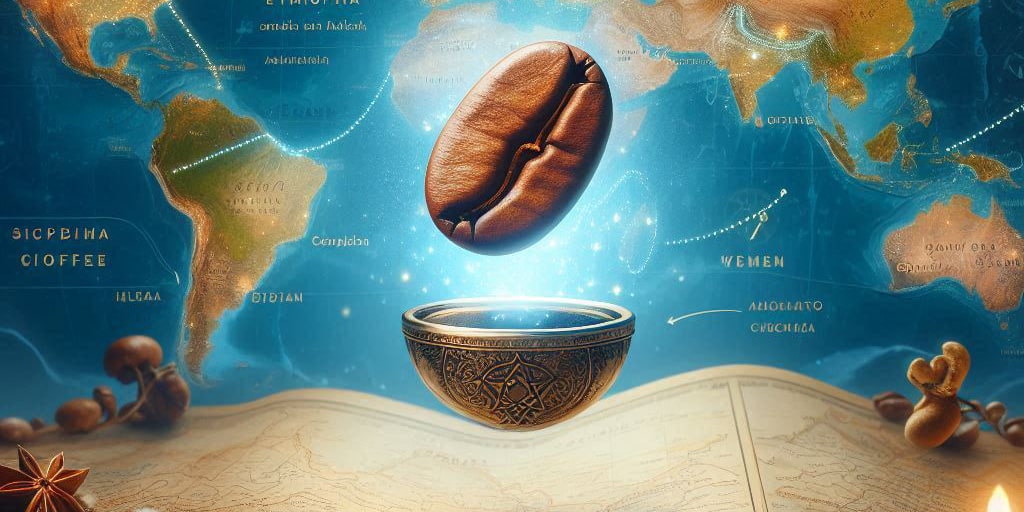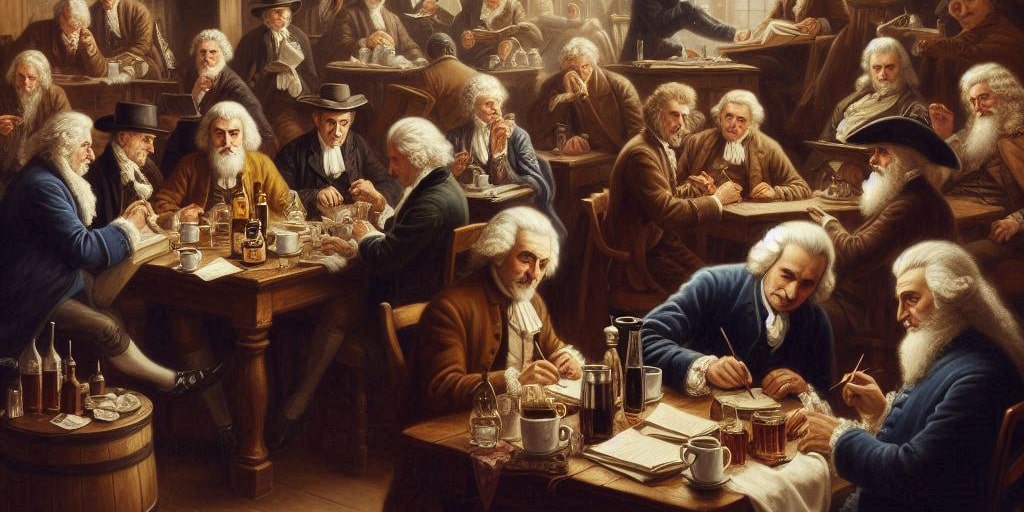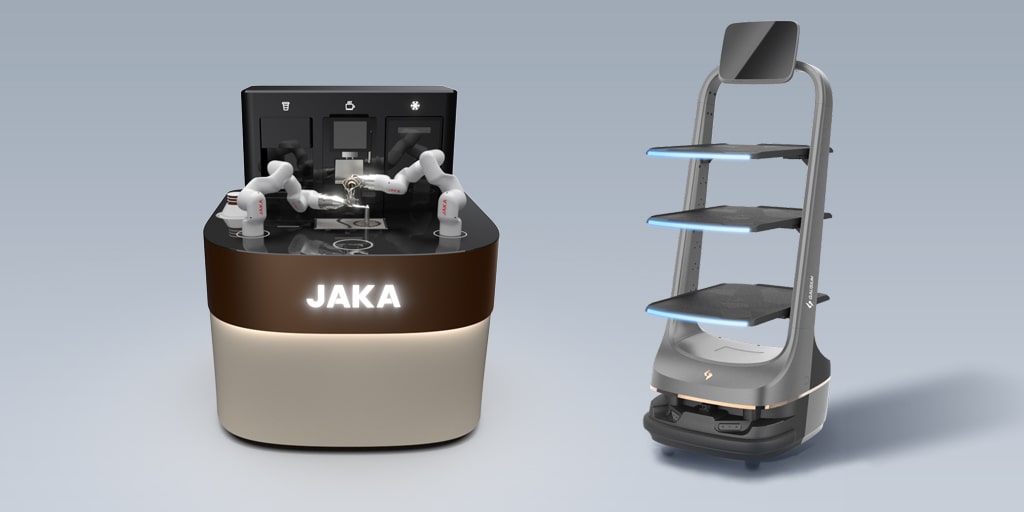- Turkish Coffee: Brewed in a cezve and known for its rich, unfiltered texture, Turkish coffee is an integral part of hospitality and social gatherings.
- Italian Espresso: A quick, strong shot of espresso forms the backbone of Italian coffee culture, enjoyed standing at a bar or after meals.
- Japanese Pour-Over: In Japan, coffee preparation is a meticulous art form. The pour-over method, using tools like the Hario V60, emphasizes clarity and balance, creating a meditative brewing experience.
I. Introduction
Coffee: a simple word that evokes complex emotions. For millions around the globe, it’s more than just a beverage—it’s a daily ritual, a moment of solace, a social glue, and even a cultural icon. From the bustling cafes of Paris to the serene tea gardens of Kyoto offering exquisite pour-overs, coffee has transcended borders and centuries to become one of the world’s most beloved drinks.
But coffee’s impact goes far beyond its rich, aromatic brew. It has played a pivotal role in shaping societies, influencing economies, and inspiring revolutions. Whether fueling intellectual debates in 17th-century European coffeehouses or driving the workforce during the Industrial Revolution, coffee has left an indelible mark on history.
In this blog, we’ll embark on a journey through time to explore the fascinating origins of coffee. From its mythical beginnings in the Ethiopian highlands to its global expansion, you’ll discover how this humble bean transformed into a cultural phenomenon. Let’s start where it all began—with a curious goat herder named Kaldi.
II. The Mythical Beginnings
The Legend of Kaldi: Coffee’s Serendipitous Discovery
Our story begins in the lush, mountainous terrain of Ethiopia, where legend has it that a goat herder named Kaldi stumbled upon coffee’s stimulating powers. One day, Kaldi noticed his goats behaving unusually frisky and energetic after nibbling on the red cherries of a certain wild plant. Intrigued, Kaldi tried the cherries himself and experienced a newfound sense of vitality.
Kaldi shared his discovery with a local monastery, where monks began to brew a drink from the cherries to help them stay awake during long prayers. Thus, the world’s first cup of coffee was born—or so the tale goes.
Coffee’s Early Uses in Ethiopia
Long before it became a brewed beverage, coffee was consumed in various forms by the Ethiopian people. Some ground the beans and mixed them with animal fat to create an energy-rich snack, while others fermented the cherries into a wine-like drink. These early uses highlight coffee’s role as both sustenance and stimulant.
From Local Treasure to Trade Commodity
As word of coffee’s energizing effects spread, its popularity grew beyond the Ethiopian highlands. By the 15th century, coffee had made its way across the Red Sea to Yemen, where it began its journey from a regional secret to an international commodity. The stage was set for coffee to conquer the world, one cup at a time.
Stay tuned as we explore coffee’s expansion into the Arab world and its transformation into a global sensation.
III. Coffee’s Journey to the Arab World
After its discovery in Ethiopia, coffee found its way across the Red Sea to Yemen, where it flourished in the fertile highlands. By the 15th century, Yemen had become the first major center of coffee cultivation and trade. The port city of Mocha (which later lent its name to the famous coffee-chocolate blend) emerged as a vital hub, exporting coffee beans to the rest of the Arabian Peninsula, Persia, and beyond.

The Rise of Qahveh Khaneh: The First Coffeehouses
In the Arab world, coffee quickly gained popularity not just as a household drink but as a social experience. This led to the establishment of qahveh khaneh, or coffeehouses, which became cultural landmarks in cities like Mecca, Cairo, and Istanbul. These coffeehouses were more than just places to enjoy a cup of brew—they were bustling centers for conversation, entertainment, and intellectual exchange.
Coffee’s Role in Religious and Intellectual Gatherings
Interestingly, coffee’s stimulating properties made it a favorite among religious communities, particularly Sufi mystics, who used it to maintain alertness during long nights of devotion and prayer. In coffeehouses, scholars, poets, and philosophers gathered to debate ideas, recite poetry, and discuss current events, fostering a rich intellectual culture that would later influence the development of similar spaces in Europe.
IV. The Spread of Coffee to Europe
By the early 17th century, coffee had begun its journey westward, carried by Venetian traders who introduced it to European ports. Initially viewed with suspicion—some even labeled it the “bitter invention of Satan”—coffee eventually won over its detractors, thanks in part to Pope Clement VIII, who, according to legend, blessed the drink and declared it fit for Christian consumption.
From Skepticism to Acceptance
Once embraced, coffee spread rapidly across Europe, gaining popularity in cities like Vienna, Paris, and London. It was heralded as a “miracle drink” that could invigorate the mind and body, making it particularly appealing to intellectuals and the burgeoning middle class.
The Rise of European Coffeehouses
Much like their Arab predecessors, European coffeehouses quickly became vibrant centers of social and political life. They served as meeting places for artists, writers, merchants, and politicians, earning nicknames like “penny universities” due to the stimulating conversations one could engage in for the price of a cup of coffee.

Famous Establishments
Notable coffeehouses like Café Procope in Paris, frequented by figures such as Voltaire and Rousseau, and Lloyd’s Coffee House in London, which later evolved into the global insurance market Lloyd’s of London, exemplify coffee’s profound impact on European society. These establishments helped shape the cultural and intellectual landscape of the continent.
V. Coffee and the New World
Coffee’s transatlantic journey began in the 18th century when European colonists introduced it to the Americas. The warm, tropical climates of the Caribbean, Central America, and South America proved ideal for coffee cultivation, leading to the establishment of sprawling plantations.
The Birth of Coffee Plantations
The French brought coffee to the Caribbean, where it thrived in colonies like Saint-Domingue (modern-day Haiti). From there, the crop spread to Brazil, which would eventually become the world’s leading coffee producer. By the 19th century, coffee had become a cornerstone of the economies in these regions, fueling global trade and shaping local labor systems, often through the exploitation of enslaved workers.
Coffee in American Culture
In North America, coffee became a household staple during the American Revolution, when colonists turned to the drink as a patriotic alternative to British tea. Over time, coffee culture grew to symbolize productivity, sociability, and comfort, establishing its place in American homes, diners, and offices. Today, coffee remains an integral part of American life, from the ubiquitous drip coffee makers to the vibrant café culture found in cities like New York and Seattle.
Through its journey across continents, coffee has evolved from a mystical brew to a global commodity, weaving its way into the fabric of diverse cultures and societies.
VI. The Industrial Revolution and the Growth of Coffee Culture
The Industrial Revolution of the 18th and 19th centuries not only transformed industries but also revolutionized how coffee was produced, brewed, and consumed. Technological advancements streamlined the coffee supply chain, from mechanized coffee mills to the development of roasting machines, making coffee more accessible than ever.
The Birth of Instant Coffee
The early 20th century saw the invention of instant coffee, a game-changer for global consumption. First introduced commercially in 1901, instant coffee allowed for quick and easy preparation, catering to the fast-paced lifestyles of the growing urban population. By the time of World War II, it had become a staple for soldiers, further embedding coffee in the daily routines of people worldwide.
Fueling the Industrial Workforce
During the Industrial Revolution, coffee became synonymous with productivity. Factory workers relied on the invigorating effects of coffee to power through grueling shifts, and coffeehouses provided a space for workers and thinkers alike to exchange ideas. This period solidified coffee's reputation as the drink of choice for the modern labor force.
VII. The Rise of the Modern Coffee Industry
As the 20th century progressed, the coffee industry underwent a major transformation. The rise of global coffee brands and franchises like Starbucks redefined how people experienced coffee, making it more than just a morning necessity—it became a lifestyle. These brands introduced a diverse range of beverages, from flavored lattes to cold brews, catering to evolving consumer tastes.
The Growth of Specialty Coffee and the Third Wave Movement
In recent decades, the specialty coffee movement has emphasized quality, craftsmanship, and origin. The third wave of coffee views the drink as an artisanal product, with a focus on single-origin beans, precise brewing methods, and innovative flavor profiles. Independent cafes and roasters have thrived under this movement, offering a personalized coffee experience.
Sustainability and Ethical Sourcing
Modern consumers are increasingly aware of the social and environmental impacts of their choices. Fair Trade and Direct Trade initiatives have gained momentum, ensuring better wages and working conditions for coffee farmers while promoting sustainable agricultural practices. These efforts highlight the industry's commitment to creating a more equitable and eco-friendly coffee supply chain.
The Role of Technology: Robotic Baristas and Delivery Robots
The modern coffee industry is also embracing cutting-edge technology. Robotic baristas offer consistency and efficiency, preparing high-quality drinks with precision and flair. These robots are now a common sight in tech-savvy cafes, where they can even create intricate latte art. Meanwhile, delivery robots enhance the customer experience by autonomously serving beverages, reducing wait times, and adding a futuristic touch to coffee service. These innovations reflect the industry's ongoing evolution to meet contemporary demands.

VIII. Coffee’s Cultural Impact Across the Globe
Coffee is more than a beverage; it’s a cultural symbol, deeply ingrained in traditions around the world. Each region boasts its unique coffee rituals and styles, reflecting local tastes and customs.
Unique Coffee Traditions
Coffee in Literature, Art, and Film
Coffee’s cultural significance extends to the arts. From the Parisian cafes that inspired literary greats like Ernest Hemingway and Simone de Beauvoir to its portrayal in iconic films like Breakfast at Tiffany’s, coffee often symbolizes creativity, connection, and contemplation. Coffee has also been the subject of countless paintings and photographs, capturing its timeless allure.
The Modern-Day Social and Work Staple
Today, coffee plays a vital role in both social and professional settings. Cafes serve as gathering places for friends, study hubs for students, and informal offices for remote workers. The “coffee break” has become a universal ritual, offering a moment of relaxation and rejuvenation. Whether in a bustling urban cafe or a quiet corner at home, coffee continues to bring people together, fostering a sense of community and shared experience.
Through its rich history and global presence, coffee remains a constant companion in the ever-evolving tapestry of human culture.
IX. Conclusion
From its mythical discovery in the Ethiopian highlands to its status as a global cultural icon, coffee’s journey is nothing short of extraordinary. What began as a humble berry energizing a curious goat herder has evolved into a beverage that transcends borders, generations, and cultures. Coffee has fueled revolutions, inspired great minds, and brought people together in countless ways.
In today’s fast-paced world, coffee continues to adapt and thrive. Whether it’s a traditional Turkish brew, a modern espresso shot, or a futuristic cup prepared by a robotic barista, coffee remains a symbol of innovation and connection. Its influence extends beyond the cup—shaping industries, supporting communities, and fostering sustainability.
As we look to the future, coffee’s role in our lives only grows more profound. It invites us to pause, savor, and connect, whether we’re sharing a moment with friends or finding inspiration in solitude.
Now it’s your turn to dive deeper into this rich tapestry. What does coffee mean to you? Have you ever wondered about the stories behind your favorite brew? Share your coffee journey or your favorite tidbits from coffee’s history in the comments below. Let’s continue the conversation over a virtual cup of this timeless beverage.
